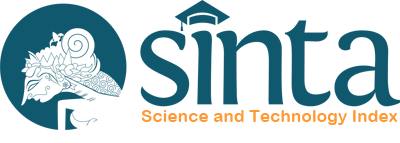ADAPTING INTERCULTURAL COMMUNICATION FOR MULTICULTURAL CLASSROOMS IN DIGITAL ERA
Abstract
This study aims to understand the role of intercultural communication among students in the digital era in creating effective communication adaptation in multicultural classrooms. Lack of understanding of students towards intercultural communication is often the cause of ineffective communication, even potentially triggering failure in building harmonious interactions. Students today are part of Generation Z, who were born and grew up in an era of very rapid technological development. Therefore, social media should be used as a source of knowledge that supports students in solving various problems while increasing their ability to adapt to new environments. This study uses a qualitative descriptive method, with data collection techniques through interviews and documentation. The results of the study show that the understanding of intercultural communication obtained by students both through the socialization process in class and through the help of social media plays an important role in accelerating them to overcome communication barriers that arise. The process of adaptation to a new culture also takes place faster thanks to the ease of access to information provided by technological developments in the digital era. This study is expected to encourage the development of a curriculum that is more responsive to cultural diversity in multicultural classrooms, as well as integrating technology-based intercultural communication teaching.
Keywords
Full Text:
PDFReferences
Alo Liliweri. 2004. Dasar-Dasar Komunikasi Antarbudaya, Yogyakarta: Pustaka Pelajar.
Cai, D. A., & Rodríguez, J. I. (1996). Adjusting to cultural differences: The intercultural adaptation model. Intercultural Communication Studies, 6(2), 31–42
Datareportal.com. 21 Februari 2024. Digital 2024 Indonesia. Diakses 15 Juni 2024, dari https://datareportal.com/reports/digital-2024-indonesia
Kim, Y. Y. (2001). Becoming Intercultural: An Integrative Communication Theory and Cross-Cultural Adaptation. Sage Publication.
Larry A. Samovar, R. E. dan Edwin R. McDaniel, Communication Between Culture 7E, Boston: Wadsworth, 2010.
Mulyana, Deddy dan Jalaluddin Rakhmat., 2001. Komunikasi Antarbudaya: Panduan Berkomunikasi dengan OrangOrang Berbeda Budaya. Bandung: Remaja Rosda Karya.
Mulyana, Deddy., 2002. Ilmu Komunikasi: Suatu Pengantar. Bandung: Remaja Rosda Karya.
Nasrullah, Rulli. (2015). Media Sosial Perspektif Komunikasi, Budaya dan Sosioteknologi. Bandung: Simbiosa Rekatama Media
tapanuliutarakab.bps.go.id. 10 Februari 2023. Hasil Long Form Sensus Penduduk 2020 Kabupaten Tapanuli Utara. Diakses 17 Juli 2024, dari https://tapanuliutarakab.bps.go.id/id/publication/2023/02/10/e141c25e965dc0dd8ffd6e3d/hasil-long-form-sensus-penduduk-2020-kabupaten-tapanuli-utara.html
Yudi Hartono, Dardi Hasyim, 2003. Pendidikan Multikultural di Sekolah. Surakarta: UPT penerbitan dan percetakan UNS
DOI: http://dx.doi.org/10.22441/visikom.v24i01.30203

This work is licensed under a Creative Commons Attribution-ShareAlike 4.0 International License.
Jurnal Visi Komunikasi [p-ISSN 1412-3037 | e-ISSN 2581-2335]
Fakultas Ilmu Komunikasi Universitas Mercu Buana
Jl. Raya Meruya Selatan, Kembangan, Jakarta 11650
Tlp./Fax: +62215870341
http://publikasi.mercubuana.ac.id/index.php/viskom

This work is licensed under a Creative Commons Attribution-NonCommercial 4.0 International License.
Jurnal Visi Komunikasi was indexed by :






